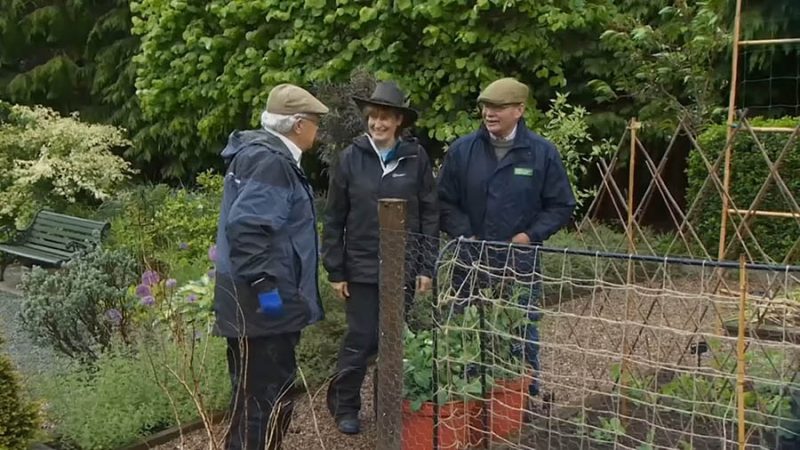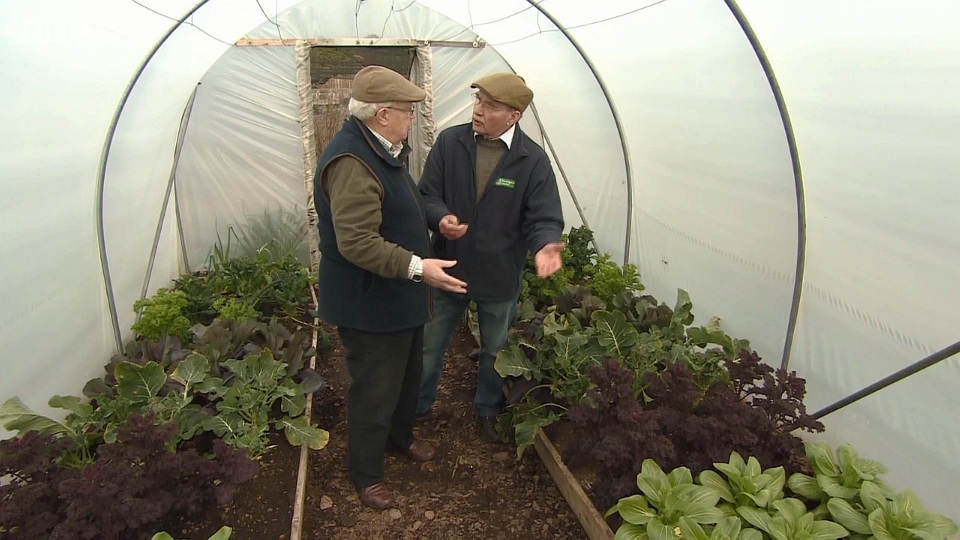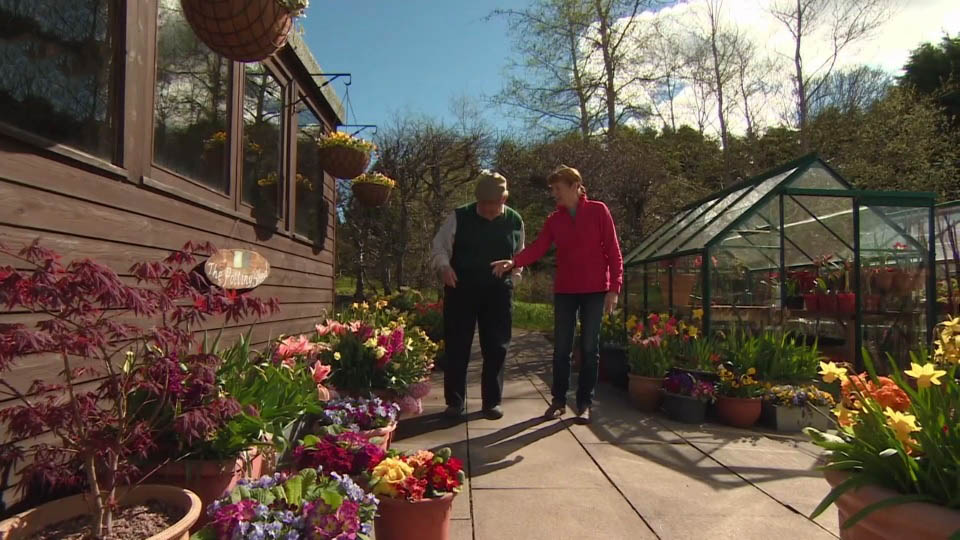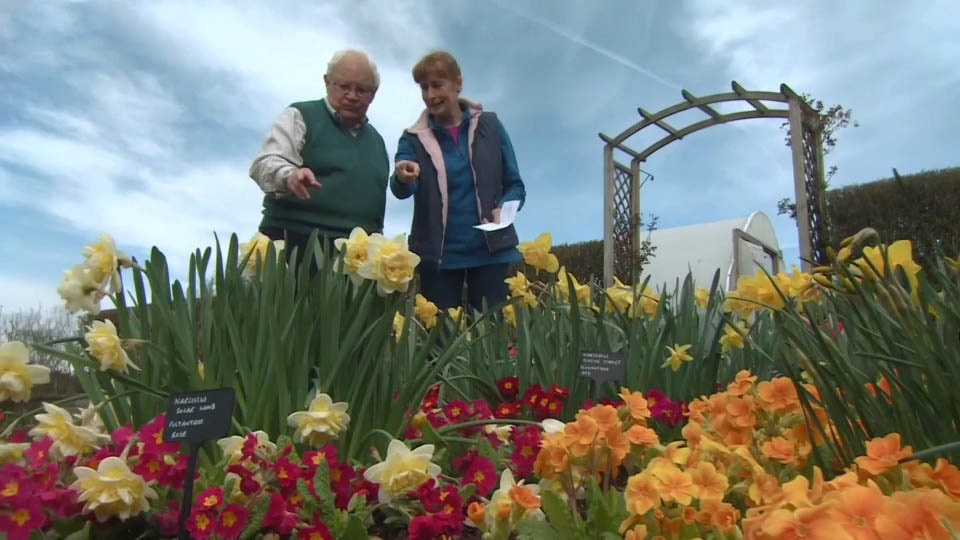In the final programme of the Beechgrove 40th anniversary series, Jim and George batten down the hatches and prepare plants for winter. Brian gives the alpine garden an autumn clean and adds some new tiny bulbs to the miniature alpine landscape. Chris makes the most of the season by showing how to have plants for free for next year. With Halloween approaching, George visits a spookily good pumpkin farm at Arnprior, and he tries his hand at some terrifying chainsaw pumpkin-carving.
The Beechgrove Garden episode 24 2018
Fruit House Update
In the fruit house this year there has been a fabulous crop of grapes which is lovely but what do you do with a glut of grapes? Do we pick and eat them all now? Give some to friends and family? George suggested that one way of extending them is to keep them on the vine for a month or so till the middle of November but George had another idea following the Victorians who devised a method of storing fresh grapes for longer, in order to serve the dessert grapes out of season and thus impress their guests. By placing the rod of the grape bunch in a specially shaped long necked bottle filled with water with added activated charcoal (to keep the water sweet).
Plants for Free
As plants start to shut down for winter it’s the perfect time to start thinking about propagation and lots of plants for free. Chris was concentrating on propagation opportunities with the roots of some plants. The first example Chris chose was a Fothergilla. Plants when preparing for winter, concentrate food reserves – (carbohydrates) back down into the stems and root system so if we can harvest some of the roots they will make good propagation material as the roots will be like a battery pack for a new plant.
Fothergilla does this anyway by throwing up lots of suckers, so Chris isolated a sucker from the main plant and cut it away from the main plant. Plenty of fibrous roots on the cutting made it perfect propagation material. He potted it up slightly deeper than it was in the ground in a 50/50 mix of ericaceous MP compost and horticultural grit, watered it and placed it in a cold frame or nursery bed over winter.
Leaf Mould
Autumn is of course leaf sweeping time and these are an incredibly valuable resource as they are a source of wonderful organic material for the garden. You can use a rake to collect them in a small area and they can then be simply stored and reused after they have rotted down. Reuse some old compost bags that you have put some holes in for small amounts and if the leaves are dry, make sure you empty a watering can of water over them
before sealing them up. Jim uses two different collection methods at home.




